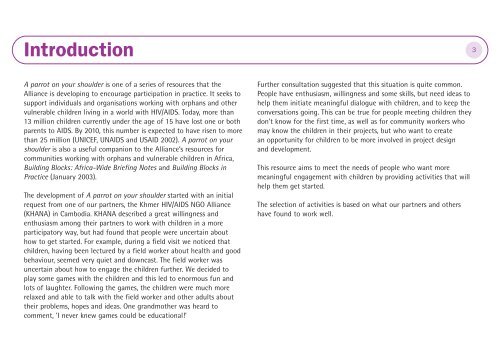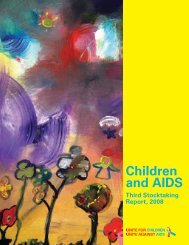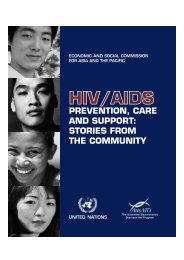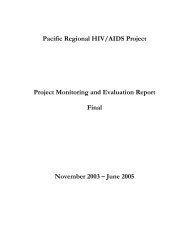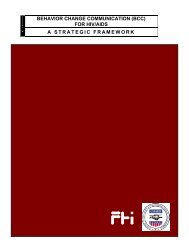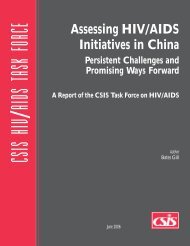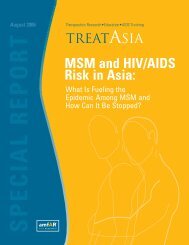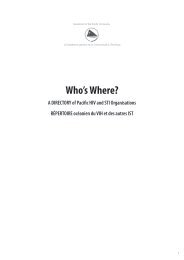A Parrot on your Shoulder â A guide for people ... - hivpolicy.org
A Parrot on your Shoulder â A guide for people ... - hivpolicy.org
A Parrot on your Shoulder â A guide for people ... - hivpolicy.org
You also want an ePaper? Increase the reach of your titles
YUMPU automatically turns print PDFs into web optimized ePapers that Google loves.
Introducti<strong>on</strong><br />
3<br />
A parrot <strong>on</strong> <strong>your</strong> shoulder is <strong>on</strong>e of a series of resources that the<br />
Alliance is developing to encourage participati<strong>on</strong> in practice. It seeks to<br />
support individuals and <strong>org</strong>anisati<strong>on</strong>s working with orphans and other<br />
vulnerable children living in a world with HIV/AIDS. Today, more than<br />
13 milli<strong>on</strong> children currently under the age of 15 have lost <strong>on</strong>e or both<br />
parents to AIDS. By 2010, this number is expected to have risen to more<br />
than 25 milli<strong>on</strong> (UNICEF, UNAIDS and USAID 2002). A parrot <strong>on</strong> <strong>your</strong><br />
shoulder is also a useful compani<strong>on</strong> to the Alliance’s resources <strong>for</strong><br />
communities working with orphans and vulnerable children in Africa,<br />
Building Blocks: Africa-Wide Briefing Notes and Building Blocks in<br />
Practice (January 2003).<br />
The development of A parrot <strong>on</strong> <strong>your</strong> shoulder started with an initial<br />
request from <strong>on</strong>e of our partners, the Khmer HIV/AIDS NGO Alliance<br />
(KHANA) in Cambodia. KHANA described a great willingness and<br />
enthusiasm am<strong>on</strong>g their partners to work with children in a more<br />
participatory way, but had found that <strong>people</strong> were uncertain about<br />
how to get started. For example, during a field visit we noticed that<br />
children, having been lectured by a field worker about health and good<br />
behaviour, seemed very quiet and downcast. The field worker was<br />
uncertain about how to engage the children further. We decided to<br />
play some games with the children and this led to enormous fun and<br />
lots of laughter. Following the games, the children were much more<br />
relaxed and able to talk with the field worker and other adults about<br />
their problems, hopes and ideas. One grandmother was heard to<br />
comment, 'I never knew games could be educati<strong>on</strong>al!'<br />
Further c<strong>on</strong>sultati<strong>on</strong> suggested that this situati<strong>on</strong> is quite comm<strong>on</strong>.<br />
People have enthusiasm, willingness and some skills, but need ideas to<br />
help them initiate meaningful dialogue with children, and to keep the<br />
c<strong>on</strong>versati<strong>on</strong>s going. This can be true <strong>for</strong> <strong>people</strong> meeting children they<br />
d<strong>on</strong>’t know <strong>for</strong> the first time, as well as <strong>for</strong> community workers who<br />
may know the children in their projects, but who want to create<br />
an opportunity <strong>for</strong> children to be more involved in project design<br />
and development.<br />
This resource aims to meet the needs of <strong>people</strong> who want more<br />
meaningful engagement with children by providing activities that will<br />
help them get started.<br />
The selecti<strong>on</strong> of activities is based <strong>on</strong> what our partners and others<br />
have found to work well.


